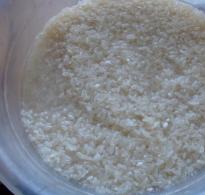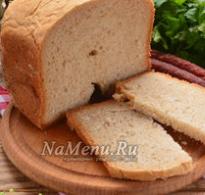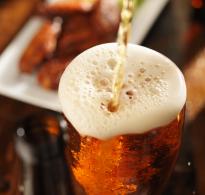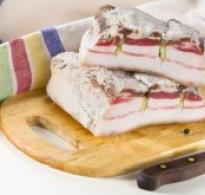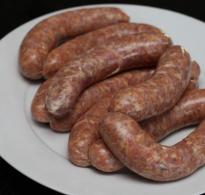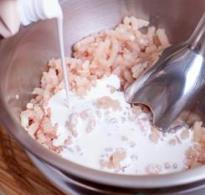Control of the quality of flour confectionery. Quality quality control and confectionery
All incoming raw materials and manufactured products must meet the requirements of existing standards, technological conditions, medical care requirements, have hygienic certificates or registration in the order established by Art. 10 federal law "On the quality and safety of food products".
The hygienic certificate is issued on the type of product. Confirm the compliance of the batch of the batch and supplied products to the established requirements (guarantee the relevant quality of goods) - the obligation of the manufacturer.
Selective monitoring of safety indicators in finished products of the confectionery industry is carried out in accordance with the procedure established by the manufacturer of products in coordination with the statesana-epidemic authorities and guaranteeing the safety of products.
Raw materials are allowed only in the presence of a laboratory or technological control specialists of the enterprise. The raw material entering the production should be prepared for production in accordance with technological instructions and instructions for the prevention of foreign objects to products.
Flour should be stored separately from all types of raw materials. Flour in the container should be stored with stacks on racks at a distance of 15 cm from the floor level and 50 cm from the walls. The distance between the stacks must be at least 75 cm.
The salt should be stored in separate containers with covers, as well as dissolved in the containers equipped with filter and production can be supplied only dissolved and filtered.
Zhi, eggs and dairy products should be stored in refrigeration chambers at a temperature of from 0 to + 4 ° C.
Egg melange is allowed in the dough for making small confectionery products in accordance with the required organoleptic, physicochemical and microbiological indicators. The egg melange is stored at temperatures from -6do + 5 ° C, the re-freezing of the melange is strictly prohibited. Storage of defrostrated melange for more than 4 hours is not allowed.
Milk cow pasteurized is stored at a temperature of from 0 to + 6 ° C not more than 36 hours from the end of the technological process of its production.
Creamy butter is carefully checked after unpacking and is cleaning from the surface. In the presence of contamination on the surface and in cases of microbiological damage, the oil is not allowed for the production of confectionery products with cream. The duration of the storage of the oil to stripping in the oil suite should be no more than 4 hours.
For confectionery, fresh clean chicken eggs can be used, without defects, with a non-damped shell, not lower than II category. Unpacking for eggs with eggs, sanitary treatment and the production of eggs are carried out under strict streaming.
Falling on the floor products (sanitary marriage) should develop in a special container with the designation "Sanitary marriage". It is prohibited to use a sanitary marriage in the production of confectionery products.
In the production of confectionery with cream (cakes, cakes, etc.), each shift must start working with pure sterilized swelling bags, tips to them and small inventory. The issuance and delivery of bags, tips and small inventory is made in every change in account with special faces with registration in the journal. Then the swelling bags should be made at least 2 times in shift.
Cake cakes with cream after manufacture should be directed to the refrigeration chamber for cooling. The productivity of the storage of finished products in production before loading to the refrigeration chamber is not due to exceed 2h.
Enterprises that produce confectionery cream must have refrigeration plants that provide storage of raw materials, semi-finished products and finished products, in accordance with the existing SanPiN "Conditions, deadlines for the storage of particularly perishable products" and real sanitary regulations. Cupcakes, cakes with cream must be stored a prime temperature not higher than 6єs.
Cakes and cream cakes should be stored at a temperature not higher than 18 ° C and relative air humidity 70-75%. It is not allowed to store cakes, cakes together with non-splashing materials, as well as products with a specific odor.
Refrigerators must be provided with a thermometer. Permanent control should be installed behind the mode of operation of refrigeration chambers. The results of checked food storage temperature should be registered in a special journal.
Cakes are stacked in cardboard boxes lined with paper napkins from parchment or piping. Transportation and implementation of cakes without packaging boxes is strictly prohibited.
On the outer side of the lid should beat the marking indicating the date, the hour of production, the mode from the rock storage.
The technological process of the production of cakes should be carried out under this technological instruction in compliance with the "sanitary rules for enterprises for the production of bread, bakery and confectionery" Sanpin 2.3.4.545-96.
All design solutions of the premises should provide for the sequence and streaming of the technological process, the lack of counterflows of raw materials, semi-finished products and finished products used and clean dishes.
The number of products manufactured must correspond to the project's design capacity.
All technological equipment must be certified and have a sanitary and epidemiological conclusion of the Gossen Sanitary and Epidemiological Conclusion of the Russian Federation. All inventory, dishes, packaging should be made of materials allowed for contact with food products, have sanitary and epidemiological conclusions and be certified in the prescribed manner.
Technological and refrigeration equipment should be placed taking into account the sequence of the technological process so that it would be excluded to exclude counter and intersecting streams of raw materials, semi-finished products and finished products, as well as provide free access to it and compliance with safety regulations in the workplace.
The layout of the confectionery shop must correspond to the sequence of the technological process of cooking confectionery products and eliminate the possibility of counterflows of raw materials and finished products.
The workplaces of confectioners are organized clearly in accordance with the manufacturing operation performed and the type of product being prepared.
The most hygienic thermal equipment are electrical apparatus. All equipment is clean, after work, thoroughly wash with hot water with detergent.
Non-mechanical equipment includes production tables, baths, racks, cabinets, etc. Production tables must have a smooth, smooth, durable, stainless surface. After each production operation, their hot water, and at the end of the working day - hot water with detergents and rinsed with hot water.
All inventory workshop is washed with hot water with detergents. Wooden inventory disinfect, rinsing hot water at least 65 ° C.
Sita, gauge of filtering, confectionery bags for cream after consumption is thoroughly washed in hot water with the addition of detergents. Then they are rinsed, boiled for 15 minutes and dried. For boiling and storage of pastry bags, you should use a special clean labeled dishes.
Brushes and washcloths for washing inventory and dishes are necessary to thoroughly rinse with the use of detergents, boil 10 to 15 minutes, dry and store in a specially dedicated place. Tools (knives, recesses, forms) in the process of work contain clean. Cook knives, like cutting boards, must be fixed behind the workplace and label. Cook rust knives need to be stored in a dry place.
All metal tools after washing hot water are disinfected with boiling in water.
Over time, clean equipment is stored in special cabinets or in closed racks.
Baths of two compartments are used for washing kitchenware. In the first separation, the dishes are wash with a washcloth and a brush with detergents, which are allowed to use at catering facilities, at a water temperature of 45 -50 ° C, in the second - rinsed with hot water (not lower than 65 ° C).
Store kitchen utensils upside down on racks. Before use, it is necessarily rinsed with hot water, after checking the purity of the inner surface. Kitchen utensils are not disinfected, as it is constantly exposed to thermal processing.
Violation of sanitary and hygienic rules of washing and content of inventory and dishes can cause the microbes of finished products, and consequently the occurrence of food poisoning and intestinal infections.
Confectionery with cream refer to perishable products. They are allowed to prepare on food enterprises in the presence of certain conditions in coordination with local sanitary supervision authorities (SES), as the creams serve as a favorable environment for the development of microorganisms. So, custard, containing a lot of moisture, starch and sugar, is an excellent staphylococcal development environment. Creams containing milk, eggs can be amized by salmonellas, in addition, they can persist pathogens of intestinal infections.
In factory enterprises in the production of confectionery cream products, a number of sanitary rules should be performed: protect the cream products from microbial pollution - allocate for their preparation and finishing individual rooms equipped with refrigerator cabinets;
Remember that the finishing of the cream of products is the final operation in the process of cooking cakes and cakes, so it is necessary to ensure the content in the purity of kitchenware, finishing inventory and strictly follow the rules of personal hygiene;
Raw materials used for cooking quality creams must comply with standards requirements. Raw materials should be subject to careful machining.
Move the process of cooking creams and finishing of cakes and cakes at a temperature not higher than 17 ° C.
Keep ready-made cakes and cakes at a temperature of from 2 to 6 degrees Celsius; Products with boiled cream and cream of whipped cream are designed for consumption in food enterprises - 6 hours, with cottage cheese cream - 24 hours, with oil cream - 36 hours.
Confectionery without decoration - at a temperature of 18 ° C.
In the summer period, custard, oil, cottage cheese creams can be prepared only with the resolution of local SES.
All confectionery are classified into two large groups:
I. Sakharist
These include: caramel, candy, marmalade, pasteil, iris, dragee, halva, chocolate.
II. Puffy
These include: gingerbread cookies (sugar, protracted, baked), galley, crackers, waffles, cupcakes, cakes, rolls, cakes.
Classification of confectionery products on the physical sugar state in them:
- - in amorphous or solid condition: candy caramel, grill, iris (solid or semi-hard), caramel for halva;
- - in the form of small crystals, which are in a saturated solution of sucrose: plain or dairy lipstick, lipstick cream-brulet, liqueur or liquor-milk masses;
- - in the form of arganozole: fruit-berry fillings, honey and liqueur filling;
Raw materials is a determining factor in the formation of consumer properties of products.
The main raw materials in the production of confectionery are sugar and sugar substances, cocoa beans, flour and starch, pounds, honey, fruit and berry raw materials and semi-finished products, milk and dairy products, eggs and eggs, fats, nuts, legumes and oilseeds.
Additional raw materials include dietary acids, aromatic substances, studders and foaming agents, emulsifiers, stabilizers, dyes, baking powers, preservatives and antioxidants. These substances play a big role in the formation of consumer properties and storage facilities. Currently, about 250 food additives are used in the confectionery industry.
Confectionery safety indicators (candies)
Must correspond to the level of the content of toxic elements, mycotoxins, radionuclides, as well as on microbiological indicators of MBT standards. Candy with a cream building are not allowed: coagulazo-positive staphylococci in 0.01 g of product, pathogenic microorganisms, including salmonells in 25 m products.
Analysis of the range and assessment of the quality of confectionery products (candies) implemented in a trading enterprise
The quality of the candies is assessed by the following indicators: food and biological value, organoleptic, physico-chemical, security.
Organoleptic indicators are determined by GOST 5897--90 "Confectionery products. Methods for determining organoleptic indicators of quality, size, net mass and component parts. " Evaluate the appearance of packing of candies, its accuracy and aesthetics of design, compliance with labeling, deviations in the mass of packaging, the appearance of the product, the form of the product, the condition of the surface, taste and smell. The appearance of the product should be attractive.
Packaging must meet the requirements of the tightness and density of felting candies by an exposure or label. In the presence of deployed and half-selected products, they determine their content by weight (as a percentage of the mass of the average sample or unit of packaging).
Candy shape can be different - square, rectangular, round, cylindrical, etc. Expanded products are considered with good lighting. Pay attention to the presence of deformed products.
The surface of the candy should be dry, covered with a smooth layer of chocolate or fat glaze, without lumen and shells. There are no glazes alone or adhesive confectionery crumbs, the presence of starch on the surface.
The color of the products is most often brown different shades (depending on the type of raw material and manufacturing technology), it must be homogeneous, without paint splashes.
The consistency of products is solid, soft when sampling. The structure is amorphous, porous, crystalline, jelly, solid, or soft when furnaceing, oily.
The taste and smell is evaluated by testing. They must be without a fatal, voiced, sour or other unpleasant tastes and smells, shovels, with a clearly pronounced taste of aromatic and taste additives.
The number of pieces in 1 kg is determined by the counting of products in a suspended joint sample, followed by recalculation by 1 kg or weighed at least 10 pieces of products from the combined sample and calculate the number of products in 1 kg. When determining the number of pieces of wrapped products in 1 kg, the packaging material is not removed.
In determining the mass of the net, the packaging material is pre-removed. Net mass of one product or packaging unit is estimated by weighing a random sample, while noting deviations from the installed mass.
The mass fraction of fat and sugar in the housings, layers, fillings and checlazed candy should correspond to the calculated content of the recipe with a limit deviation from the calculated + 3.0%. The mass fraction of the filling in chocolate candies of the Assorti type should correspond to the calculated content of the recipe, but not less than 20% with a limit deviation of ± 5.0%. The mass fraction of ash, not soluble in a solution of 10% hydrochloric acid, should not be more than 0.1%. The mass proportion of the total sulfuric acid in the fruit cases should not exceed 0.01%.
Candy safety indicators for the level of maintenance of toxic elements, mycotoxins, radionuclides, as well as on microbiological indicators, must comply with MW standards. In sweets with a cream building are not allowed: coagula-musted stamps staphylococcis in 0.01 g of product, pathogenic microorganisms, including salmonella, in 25 g of product.
Candy quality examination is carried out on the basis of the definition of organoleptic, physicochemical and microbiological indicators by methods set forth in state standards.
Brief description of the company
Shop "Frigate", located at the address of Smolensk Avenue Gagarin Dom29 / 1 (Zip Code 214018).
This is a separate building built into the residential building, with a good location, is located near the regional hospital, school No.9, Smolensky cooperative technical school, hostel, Smolensk industrial and economic college.
The store takes the entire first floor of a residential building.
Mode of operation from 8:00 to 21: 00 Bez break, without days off.
For acceptance of goods in the store there is a special entrance.
The store consists of 2 industrial and food departments.
Industrial department:
Cosmetics
The food department is divided into sections:
- 1st Section: Bread Bakery Products, Sausage Products, Dairy products, Fish and Canned meat.
- 2nd section: fruit and vegetables
- 3D Section: Food Fats, Fish and Meat Canned, Canned Fruit - Vegetable, Fish Products.
- 4th section: Taste products (alcoholic, low alcohol drinks).
- 5th Section: Fish and Fish Products
- 6th section: Confectionery, low alcohol drinks
- 7th section: Comburry goods, fish, canned food, food fats, fruit and vegetables canned food, semi-finished products.
Equipment is used in the commerce:
- 15 refrigerators,
- 10 wall slides,
- 7 counters,
- 7 cash cars.
The store's management is trying to satisfy the interests of manufacturers, consumers and society as a whole.
This is achieved by good quality and environmental safety of the combination of medium prices.
The main customers of the store are local residents, as well as visitors to the regional hospital, cooperative technical school, industrial and economic college, school number 9.
The main suppliers of the "Frigate" store are:
OJSC "Khlebokk" (bakery products)
Smolensk Food Combine (ketchup, mayonnaise)
OJSC Bakhus (Vodka)
KONFA OJSC (custard ginkers, cookies, waffles, dragee, marshmallow)
JSC "Vitebsk Meat Processing Plant" (Measkovit)
Somomi LLC (Macaroni)
Yunimilk (Summer Day Milk, Prostokvashino)
Competitors of the "Fregat" store are:
Shop "Magnit", "Fortune", "Products", "Store №4", stalls.
Analysis of the range of confectionery (candies) produced in the Fregat shopping enterprise
Form products can be attributed to rye, bars for tea, muffin buns, donetsky bread, Bread Orenburg and others. To products of complex shape - pinch, pretzels, horns, separate types of drowshes, amateur products, bricks, etc. Some products There may be lateral slips from two, three or four sides, formed from contact with each other when baking on sheets.
The degree of combination of products. By the degree of bakery, bakery products can be divided into two groups: I - bonded (sugar content and / or fats for recipes from 14 to 20% to the mass of flour); II - high-festive feet (sugar and / or fats for recipes over 20%).
A distinctive feature of high-recipe bakery products is not only in a higher food and energy value, but also the need to use more yeast, often choose a dual method of a diet, longer kneading test. The dough with a high content of sugar, fats and eggs is more viscous, plastic, it is better rolled into the reservoir, but worse is rounded. Test blanks with proofing less rose or require a longer proofing, and when baking - decrease in the temperature of the bakery chamber.
The condition of the surface of the pieces. According to the condition of the surface, bakery products can be divided into four groups: I - products without finishing test blanks and finished products; II - products with trim test blanks; III - products with finished products; IV - products with finishing test blanks and finished products.
Under the condition of the surface of a bakery bakery product is understood as the surface characteristics of the product, which takes into account the presence (or absence) of the finishing of the test billet or product, as well as the type of finishing semi-finished product, finishing mixture, oilseeds, etc., such technological processes will also affect the condition of the surface of the products. Like spraying, welding, sidpark and roasting test blanks.
Raw materials, semi-finished products and methods of surface finishing largely determine the appearance, consumer and taste quality products, affect the choice of equipment, as well as the possibility of creating integrated mechanized lines and automation of production.
The finishing of the test billet is applied to its surface of raw materials, finishing semi-finished products or oilseeds, cereals, finishing mixtures.
The surface of the fruited products is milder, glossy or smooth, rough or corrugated; It can have cuts, pumping, reliefs, prints or drawing. This is achieved by the appropriate trim of test blanks before baking.
To obtain a mildered surface, test blanks before or after the proofing sprinkled with flour (rye or wheat). To give a product with a smooth, glossy surface with a bright color for test blanks, melange, egg lubricant, starchy holter, sugar solution and special lubricants are applied.
The rough surface has products that are sprinkled with Poppy (Donetsk Bread), Salt (Crispy Bread, Salt Salt), Rubble Almond or Walnut (Elevated Calorie Buns), Sugar Sand (Moscow Buns, Sugari Autumn with raisins), finishing crumb (Vyborgnya, Suck Amateur and Coffee, Sverdlovskaya Pier), Cinnamon (crispy loaves with cinnamon), etc.
For test blanks after the end of the proofing, longitudinal, transverse, oblique or radial cuts with a knife can be applied before baking manually or using cutting mechanisms. Appointment of cuts - not only to decorate the surface of a fever product, but also to protect the test blank from the occurrence of cracks and undermines of the crust. The surface of the outcropped piece of test due to the released carbon dioxide is torn only in the places of cuts. The number and nature of the cuts, their depth is determined by the type of product, as well as depend on the structural and mechanical properties of the test, to which the conditions and the degree of it are influenced by the condition and degree of it. Some products in front of baking instead of cuts are punched (crunchy crunchy, crispy loaf, sour cream).
The surface of the products may have reliefs from the sealing machine (horns, bagels), rifles and traces from underground grid furnace (straw, crispy loaf), prints or drawing from stamping fixture (figured small products), as well as enclosures or inclusion of additional raw materials: raisins ( Buns of high calorie), crumbs (crispy loaf), poppy (Solomka Kiev), cumin (small products), walnut (Sugari nut), etc.
The surface of some products is applied with a drawing of a zucatov (buns with a zucchite) or custard test (Vyborgsky, decorated in the picture). Some felling products (pretzels Vygsky, Stoli, buns are with lipstick) glazing, that is, they apply a heated fondant mass on the upper crust of warm or cooled finished products.
The common identifying features of the assortment and qualimetric characteristics of confectionery products include organoleptic indicators: appearance (color, shape, condition of the surface), taste and smell, internal structure (view of section, fault, porosity, merges, etc.) or structure. Most of these indicators and their values \u200b\u200bare governed by standards, a smaller part is not regulated.
Appearance is estimated at all confectionery. This is one of the most significant quality indicators, although not the most reliable, since in the process of production of falsified goods, it is precisely in appearance to seek similarities with a genuine product.
The color of confectionery products is very diverse and is characterized by a wide range of colors and shades caused by the paint substances of the feedstock, somewhat changed in the process of heat treatment, or newly formed by the production of artificial origin (melanoidines, caramelins), or dyes, the addition of which is provided by the recipe.
To the products whose color is mainly determined by natural modified coloring substances include fruit-berry products (jam, jam, jams, confitures, fruit and berry marmalade, chocolate products and cocoa). Adding synthetic dyes to them is not allowed and is considered falsification.
The modification of the color in these products is caused, first, partial destruction and change of coloring substances (anthocyanins, chlorophyll-carotinoids), and second, with a long cooking of jam, jam, melanoidins and caramelins can be formed. For products of these subgroups, the following colors are characterized: red, pink, yellow, green, as it is they prevail in used fruit-berry raw materials. Only for chocolate products and cocoa are characterized by various shades of brown (chocolate) color.
Color formation due to newly formed in the production of coloring substances is marked in flour confectionery products, certain types of candies (for example, milk), iris, halva, etc. In certain types of flour confectionery products, additional color is possible due to the auxiliary raw materials (eggs, saffran and t. n.). The predominant are yellow, golden, brown colors.
A rather extensive category is confectionery, the color of which is caused by food additives. It includes caramel, candy, dragee. The list of dyes allowed for use in the confectionery industry wide with a variety of colors, but major color (red, pink, orange, green, white), less than minor (blue, blue, purple) prevail.
The choice of such colors is due to the desire of the manufacturers to mimic the color of natural fruit-berry raw materials specified in the title (for example, jelly marmalade inherbird or black-core - purple color, melon - yellow, caramel lemonciles - yellow, etc.). In addition, the consumer is psychologically configured in the consumption of confectionery products on light pleasant sensations, which largely contribute to major products of products.
The color of glazed confectionery is determined by the color of the glaze: chocolate (brown) and confectionery (white, pink, etc.), therefore, with an assortment identification, it is important to determine separately the color of the glaze and the color of the main product.
The form is the most important indicator at the assortment identification, especially the names and trade brands of confectionery products.
The form of confectionery is distinguished by a large variety even inside the species. During a small exception, this indicator is formed in the production process and at the subsequent stages of the technological cycle of the broadcast cannot be changed.
The production of high-quality confectionery products is impossible without constant technological control of the quality of the processed raw materials, semi-finished products and finished products. Consideration and control over the spending of raw materials and materials, and, consequently, the number of losses and waste production are also dependent on technological control.
The basis of the production of confectionery products is complex physical and chemical changes in raw materials, semi-finished products occurring at certain optimal technological parameters, with a deviation from which the quality of products and physico-chemical indicators do not correspond to the GOST.
For this purpose, use control and measuring devices, for the testimony of which control is necessary. Organoleptic and physico-chemical indicators provided for by gtostas for each type of confectionery products are determined by the technical control by systematically conducting analyzes.
Technological control is of great importance both under conditions of low-power enterprises and in modern major enterprises equipped with mechanized and automated lines.
Uninterrupted and clear lines work is possible only if the quality stability of semi-finished products and raw materials is stable. Thus, technological control corresponding to the requirements of sanitary rules and norms (SanPine 2.3.4.545 - 96), the requirements of production is an important condition for the normal operation of the enterprise and the receipt of high technical and economic indicators.
Sanitary rules and norms regulate the organization of laboratory control. Laboratory control is carried out by an accredited laboratory of the enterprise and includes testing the quality of raw materials and auxiliary materials, finished products, control over compliance with the technical and sanitary and hygienic regimes of confectionery products.
Many pastry semi-finished products (finishing cream creams, etc.) and high humidity products (rolls, cupcakes, cakes and cakes) are a good nutrient medium for microorganisms, do not stand long storage time and create a risk factor. This primarily refers to some species of cakes and pastries. When developing such products, microbiological monitoring of the production and quality of confectionery products is especially necessary. Enterprises are developing a graph of the microbiological control of the quality of products and the sanitary condition of production. The schedule is agreed with the states of state-poidnadzor.
If the company does not have a laboratory, laboratory control can be carried out by indentation with the agencies and institutions of state-poidnadzor or laboratories accredited by state-poidnadzor and state standard.
The quality of finished products, its nutritional value at the first stage of production depends on the quality of raw materials, its safety.
Sanitary rules and norms. SanPine 2.3.2.560-96 regulate hygienic requirements for quality and safety of food raw materials and food products.
These requirements, as well as gtostas on each type of raw materials and semi-finished products, should correspond to each type of raw material entering enterprises for processing. At the enterprise, technological control begins with an assessment, testing of the quality of raw materials and semi-finished products and continues when storing raw materials. Storage conditions and basic quality indicators are controlled.
Technochemical control provides for monitoring the quality of auxiliary materials (labels, paper, cardboard, glue, etc.), water used in production and boiler room, fuel and other materials. According to the results of testing the quality of raw materials and materials, the laboratory concludes about their suitability.
Without the permission of the laboratory, no batch of raw materials and materials cannot be used in production. The laboratory establishes a sequence of using individual batches of raw materials.
Control over the exact dispensing of individual recipe components (raw materials, semi-finished products) in accordance with recipes.
In the course of the technological process, technological parameters are governed at individual stages and operations, such as temperature, duration, steam pressure, vaccine-duck - Um-Cameras.
The quality of raw material mixtures, syrups, confectionery masses and products is characterized by major physicochemical indicators, such as the content of dry substances, alkalinity, wet, porosity, density. The quality of finished products is determined by organoleptic and physico-chemical indicators provided by GOST. If the technological process is violated, the technical control service participates in clarifying the causes and their elimination.
The technical control service is also involved in the development of new varieties of products, improving technological processes aimed at reducing losses, an increase in the exits of semi-finished products and finished products.
In confectionery factories, technoochemical control is carried out by the central (production) laboratory and shops. Functions performed by laboratories are different.
The central laboratory controls the quality of raw materials, water, auxiliary materials, containers. It issues a conclusion about the confinement of raw materials and the possibility of its use, performs periodic control over the quality of raw materials, materials, long-stored in stock, selectively checks the quality of semi-finished products, finished products. The central laboratory controls compliance with the recipes and technological instructions for preventing foreign inclusions to products, participates in the preparation of a report on the expenditure of raw materials, materials, development of measures to reduce losses and waste reduction. The central laboratory manages the work of workshops and checks their work.
Cent laboratories control raw materials and materials only by organoleptic methods, estimating their taste, smell, appearance and color, the absence of extraneous impurities. They check the correctness of the dosing and compliance with the formulation, control the course of technological processes, as well as the quality of finished products and semi-finished products manufactured by the workshop. For each batch of products manufactured by the workshop, the workshop laboratory issues the result of the analysis. It also monitors the implementation of the instructions for the prevention of foreign objects in the warehouses of the workshop and at all production sites. In the absence of shop laboratories, its function performs the central laboratory.
The laboratories must be equipped with various appliances and equipment (scales with analytical, technical, drying cabinets with thermostat, muffle furnace, centrifuge, photodelectrocolorimeter, sugarimeter, refractometers, potentiometer, conical plastometer, thermostats, distiller, etc.).
The work carried out by laboratories is fixed in magazines. Records are carried out in ink clearly and picking up. The clearing is not allowed. All magazines must be numbered, laid, the number of pages recorded by the signature of the head of the enterprise or the person, the Commissioner. Signature is bonded by the printing of the enterprise. This requires employees of the laboratories of professionalism and accuracy in work.
For the production of each type of products, areas of production, research objects, frequency and control methods are installed.
Test methods must comply with gtostas, for example: methods for determining the content of moisture and dry substances in confectionery - GOST 5900-73;
Methods for determining the content of fat in confectionery - GOST 5899-63;
Methods for determining the content of sugars and fiber in confectionery - GOST 5903-68.
The state of laboratories depends on the power of the enterprise. One working area is needed 14 m2. The total area is 200 ... 250 m2. Lighting - natural at the expense of large windows, in the evening - artificial (better daylight lamps).
All employees are obliged to comply with the rules for safety and fire fighting measures and systematically receive instructing the head of the laboratory. Much attention is paid to the cleanliness of overalls (bathrobes) and hands. The laboratory table is strictly forbidden to eat. All electrical appliances must be grounded and equipped with good fuses. In the laboratories, there must be good fire extinguishers, a box with sand.
Technoochemical control must be improved. It must mainly focus on instrumental assessment methods. Currently, sensory or organoleptic assessment methods are dominated in a number of production and much depends on the ability to verify the quality of the product.
The confectionery includes raw materials, which is a good nutrient medium for microorganisms. This is primarily a raw material containing a significant amount of moisture: butter, egg protein or eggs, cream, milk. Therefore, for example, creams are perishable semi-finished products and are very sensitive to all kind of bacterial contaminants.
The resistance of creams along with the influence of the purity of raw materials and the sanitary conditions of their manufacture has the effect of sugar content in the liquid phase. Sugar, increasing the osmotic pressure in the medium, prevents the development of microorganisms. At the same time, the sugar content in the liquid phase of the cream is important, since the development of microorganisms requires a certain ratio of sugar and moisture.
When the sugar content in the liquid phase is less than 60%, the resistance of the cream is reduced. The largest moisture content in Charlotte creams (25%) and protein (30%). Therefore, one of the cream indicators characterizing its safety is precisely the sugar content in the E / seed phase, which is determined primarily when carrying out technological control of production. Laboratory analysis is determined by the humidity of the cream and the sugar content designed for dry matter of the cream. Next, the sugar content in the liquid phase is determined by the estimated path in the following sequence.
1. Determination of sugar content in kind in the cream for which humidity is determined by laboratory analysis. Denote the sugar content in nature (%) of the letter C, then
C \u003d (100-c) AIM,
Where in the humidity of the cream on laboratory data,%; A - sugar content on dry matter,%.
2. Determination of sugar on the aqueous phase of the cream of the formula
K ~ 100 s / (in + Q.
Example of calculation.
The cream defines;
B \u003d 25%; A \u003d 51.2%.
C \u003d (100-25) ■ 51.2: 100 \u003d 38.4%;
K \u003d 38.4 100: (25 + 38.4) \u003d 60.56%.
Requirements for raw materials, semi-finished products, preparation of raw materials to the production and production of products. In the production of flour confectionery products, more than 100 types of raw materials have a different chemical composition, physical condition, biochemical properties, individual qualitative indicators and shelf life. The listed features are reflected in GOST, the remains that are the main regulatory documents that raw materials should correspond to.
Each type of raw materials must meet the requirements of standards and specifications and have a quality certificate from the supplier or a hygienic certificate. It should satisfy copper co-biological requirements. The hygiene certificate is drawn up on the type of product, and not on a specific batch.
The compliance of each batch of requirements is guaranteed by the manufacturer. This is his duty. The supplier's imported food additives is obliged to provide a certificate and specification, as well as a hygienic certificate or permission of the Russian State Epidemiological Summary.
On semi-finished products entering confectionery enterprises (chocolate glaze, chocolate mass, cocoa powder manufacturing, etc.), there are also standards (OST), the requirements of which they must satisfy.
Auxiliary tarople-packing materials and manufactured products are also required) Gee to meet the requirements of the current standards, the one, as well as medical and biological requirements.
Raw materials and auxiliary materials are allowed in production only in the presence of the laboratory of the enterprise or technological control specialists of the enterprise.
The quality of raw materials depending on the conditions and storage time may change. Given the possible changes, the storage conditions of each type of raw materials are established, the creation of an optimal relative humidity of air and temperature in storage room.

